“¿Qué Pasa, Ahora?” (“What’s Happening Now?”) is an evening length work that celebrates and investigates the multiple relationships within my family. While every family possesses its own dynamics and ways of defining and demonstrating love, my daily interactions as the mother of a teenage daughter and a six-year-old son are an integral part of my research. As a Cuban-American raised with my two brothers in a patriarchal, strictly Catholic, blue-collar home, the roles of mother, wife, sister, and daughter came with certain expectations, which I continue to redefine.
“¿Qué Pasa, Ahora?” had a large multigenerational cast which continued to expand my creative approach. The cast members provided me with multiple perspectives on the themes of family. I have observed that family relationships are constantly shifting and developing over time. My concert revealed the changing dynamics within my own family as a way of provoking thought about the modern family in general. I explored how my family deals with the distance, both ideologically and physically, among different family members. We are a family that is scattered across the country from the deep south to Minnesota, with aunts and uncles who still remain in Cuba; however, the physical distance is only one part of our family dynamic. My family also has members with vastly different political beliefs, ranging from the conservative right to the far left, which creates divides far greater than any physical distance. I examined through movement how we confront these differences, navigate and maintain the richness of our multiple cultures, and contribute as individuals. Likewise, as a teaching artist for Taller Puertorriqueño in North Philadelphia, I am driven to create work that reflects the richness of the Latino community, a community that is often misunderstood and invisible.
“¿Qué Pasa, Ahora?” is a movement story created from dance vignettes that displays different elements of my upbringing: the traditions, religious influences, and the blending of the cultures that define my family. I shared an inside view into what it was like growing up as the daughter of two immigrants in a very traditional family situated in a largely patriarchal, Cuban-American community. Likewise, I explored the experience of diverging from this traditional structure and creating a household where each family member balances responsibilities, works towards empowering and supporting one another, and draws closer as a result.
“¿Qué Pasa, Ahora?” consists of a pre-show and three sections: “La Mesa en La Saguesera”, “Among Us” and “Ahora”. Each section contains multiple vignettes that demonstrate the passage of time and combines several intertwining storylines related to different aspects of family relationships. Utilizing a large multigenerational cast, I focused on relationships between spouses, siblings, grandparents, and different aspects of the child-parent relationship. The pre-show segment encouraged the audience to actively participate throughout the evening. As the audience entered Conwell Hall, site for the piece, they were welcomed by dancers and a young singer, Cecilia Castro, who improvised and greeted audience with her voice. I see the audience as representatives of society and, as a result, their presence affirms the idea that the family depicted in my piece exists within a social system. Anne Bogart in her book “and then you act making art in an unpredictable world,” also explores the relationship between the audience and society. Bogart states,
It is in the heat of a shared experience that an audience becomes its own society. You are here with a whole lot of other people. Can you handle that? We are a community of people dealing with each other, challenging each other. The theater is about social systems and how individuals in communities function in concert.1
Family is the first aspect of community we experience, our first connection to others. In my work, the audience is asked to contribute by using their imaginations to tap into their own memories. According to Eutgenio Barba, “Viewing a performance is action, it is work. The audience, just like the actors, must be active during a performance.2 ” I am creating a place where each is asked to reflect on their own experiences.
“¿Qué Pasa, Ahora?” is a shared experience divided into three sections. Once the audience entered the fifth floor theater, they saw a dining room tableau, and were welcomed by Rhonda Moore, who plays the grandmother mother and interacts with every audience member. She welcomes them to her daughter’s house, and comments on how she is there and not really there, how she is observing from above. Three generations of family members are slowly introduced through the choreography of preparing the dining room table for dinner. In this first section, “ La Mesa en La Sawesera” (The Table In Little Havana), the movements are inspired by traditions, rituals, and memories surrounding the preparations of a family dinner. The relationships between family members are slowly revealed as the evening progresses, demonstrating the language of raw emotions.
My first family responsibility was setting the table, and the routine nature of this task has deep significance for me. The placement of each family member establishes the power dynamic within the family and serves as an introduction to interpersonal relationships. This dynamic is expressed through duets and trios that are layered into the choreography and take place around the dining room table. In the next choreographed segment, a young girl enters the “pink world” of a 1980’s ballet studio, establishing a place of escape and fantasy. The movement is simple, soft, ballet-based, comical and repetitive, creating a sense of comfort. Working with three talented young ballet students for this section helped me realize how important the ballet studio is in my life, and how the discipline and structure of the form is a part of who I am, all of which becomes more evident in the movement choices of the rest of the piece. The dance studio is a second home to me. I have many beautiful memories of my time in the studio and while working with my students and cast members I realized that the ballet vignette would be a great place to add another dimension to the development of the young girl's character and also to demonstrate another aspect of the mother/daughter relationship. The projection in the studio reflected the era of male dancers with three portraits, one of Fernando Bujones, another of Gelsey Kirkland and Fernando Bujones, and last one of Mikhail Baryshnikov, all bringing to life the 1980 dance studio with young girls in cap sleeve leos and ballet belts admiring the dancers of that era. The dance is both structured and free. Using the song “ Que Sera Que Sera “, I introduced a circus-like tension, and inevitable emotional outbursts that exist around the dining room table.
The third dance in “La mesa en La Sawesera” was based on the fond memories I had growing up in our house at 1781 South West 15 Street, Miami, Florida. Our home was located at the center of La Sawesera, the common name used among locals for that area and the original name for the Little Havana neighborhood. At local church carnivals and parades, one would often find students from private Catholic schools like the elementary school that I attended, St. Peter and Paul. Even though the music heard had Latin roots, the dancing was truly reflective of the bi-cultural and primarily working class families that lived in exile in Little Havana at that time. Little Havana evoked the nostalgia exiles felt for the life they knew in Cuba prior to the revolution and the dictatorship of Fidel Castro. I agree with Gustavo Perez Firmat in “Life on the Hy-phen the Cuban-American Way” when he states, “The Passage from Cuban to Cuban-American may not be an easy trip, but it is not beset by insurmountable roadblocks. Since the hyphen is not a minus sign but a plus, a Cuban-American is not less Cuban but more American.3 ” My parents took part in American life but remained Cuban; we spoke Spanish and went to a church that was primarily Cuban. My teachers were Cuban. My ballet school taught the Cuban ballet traditions and most of the students were Cuban. To close this section I return to the house and the couch scene as the family dances to the theme song of “Que Pasa, USA ?”, a TV show of that era that reflected the life of many Cuban- American immigrants. To me this scene is fun, caring and real. It was an improvised score that the dancers added to with every rehearsal and performance. This scene kept me, and the dancers, on the edges of our seats, wondering how they were going to settle and sit on the couch for that one moment. I continued to juggle with the balance of Cuban culture and family. I felt the more I created using my memories and tried to stay true to the cultural hybrid we lived, the more the essence and warmth of love would be portrayed in the piece. I had many conversations with the dancers about the characters on how we are just people putting everyday life on stage and I felt the need to value the simple moments of life.
This first section of the concert represents a specific community living in a specific time and place. In Little Havana, these exiles recreated their memories of pre-Castro Cuba in the streets, parks, business and churches of Miami. Firmat describes Cuban-Americans' relationship to place and roots in a way that is unique to Cuban-American culture:
We Cuban have a peculiar relationships to our roots: we eat them you take your favorite aboriginal roots - malanga, name, yuca, boniato- and you cook them until they are soft and savory. In keeping with your roots’ roots. You might even cook them in a hole in the ground. But then you consume them. You don’t freeze them. You don’t preserve them. You don’t put them in a root museum. You don’t float them down a root canal. You eat them in the knowledge that such conspicuous consumptions will let you remain faithful to—what else? your roots.4— Firmat, 15
The movement vocabulary in “¿Qué Pasa, Ahora?” embodies this root consumption, including backbends, lifts, kicks, and Cuban-influenced steps that are rooted within me and inherent in how I move. The movement also contains tensions seen as dancers move together and apart, negotiating the space between each other and their relationship to the table.
This tension evokes the Eastern Airlines workers’ strike during President Reagan’s term. My father was a mechanic for Eastern Airlines and a union worker for 25 years. We were all affected by the strike. I remember observing my father holding his signs on the picket line. This experience instilled in me an understanding of what it meant to be ‘blue collar’, and I developed a lifelong respect for labor unions. The strike lasted several years and changed everything. I no longer attended a private Catholic school. Instead, I attended a public magnet school. This was a small transition preparing me for the larger change that was about to come. This section of my concert ends with a solo where the older sibling leaves for the Army, performed by Aaron Mitchel to Prince’s “Let’s Go Crazy” The concert was filled with set choreography and improvisation scores and this solo was an example of this combination. I trusted that Aaron had an understanding of his character where I could allow him to find the freedom and add his own subtleties to his solos and set structure. He had certain moments around the table that he had to execute, but I also provided him with the freedom to change the order, add jumps, and roll on or above the table where/when he felt it was right, keeping him actively involved in the moment. We worked on several options together but he had to improvise in the moment and choose when he would jump, roll, or slide on the table. I wanted to show how his character developed and evolved from a young teenager to a seasoned army veteran. The freedom of his first solo contrasted with the intense structure of his military solo, and allowed for the development of his character. His part was the most developed throughout the show and how he portrayed change was imperative to the whole concert.
This solo takes place as the family prepares to relocate to the Midwest from Miami. At the time this actual event occurred, my parents stated they were finally moving to America even though they had lived in Miami for over 25 years. This relocation marked a transformative point in my life when I began to identify as a minority and began to realize what that status meant.
The second section, “Among Us”, deals with transition and change. This section incorporates multiple areas of the theater with dancers entering from the audience. The dancing in the audience space once again symbolizes society. It physically explores the following questions: When are we performing? When are we being observed? How do society’s rules and expectations affect our lives? How do people respond when we act outside societal norms? Who are we performing for in our daily lives? This is a section I am continuing to develop, and I will be performing elements of this section in The Dancer-Citizen Live 2018: MOVING THE MAP (on June 24th, 2018) live stream and multiple site event.
Later in “¿Qué Pasa, Ahora?” we see a collection of duets, trios and small group work demonstrating the three siblings beginning their own families. First the younger brother and his wife dance a duet filled with smiles, soft moments, strong linear movements and gentle partnering to the lyrics of Silvio Rodriguez, performed by Calle 13, the song writer is known for his highly eloquent lyrics and left-leaning elements. This duet was one of my favorite sections to work on and the dancers connected beautifully. They brought a desire to investigate and dig further to every rehearsal. The focus then shifts to my own immediate family life and my husband and me sharing responsibility as parents. The strong feminist theme continues to develop thoughout, reconstructing the family dynamic. Later we see the the older brother return in his military uniform, and the intensity changes: we see the love, loss and commitment to both his wife and military duties. I have spent two years working with this duet and the dancers have dramatically grown as performers and artists during the creative process. Many stories were shared by both myself and the dancers. Emma Manion played the army wife; and Emma comes from a family that was deeply affected by war. She had a personal connection to the story and brought more insight to every rehearsal. I trusted the dancers more and more every day, and knew I could ask them to reach further and take larger risks and reveal more of themselves. Slowly the changing dynamics are revealed in three relating pivotal duets. The third and final section, “Ahora”, incorporates the whole family, and progresses to a quartet around the couch representing my immediate family. This celebratory section culminates with the complete cast dancing together, representing a larger, more diverse picture of families.
As television has had a history of playing a big part in family culture, I included popular television sitcoms and different aspects of pop culture, including arrangement of multiple theme songs played by pianist Noah Farber. Farber included songs from the television shows of the past (I Love Lucy, Qué Pasa USA?, Simpsons and Roseanne) to the popular television sitcoms video games played today. I aim to show how families have been portrayed through American culture and also show the passage of time in “¿Qué Pasa, Ahora?”. I created a space that is inviting and celebratory, where one can reminisce and reflect on different aspects of their own family relationships.
As I move forward from this long creative process, I am stepping away from the structure of “¿Qué Pasa, Ahora?” and using it as a source for new creations and explorations. It is a circle, and now I return to the research stage where I move, explore, take risk and do not edit; where I am open to new collaborators new ideas and insight the process of “¿Qué Pasa, Ahora?” showed me. When one performance ends the research for the next one continues.
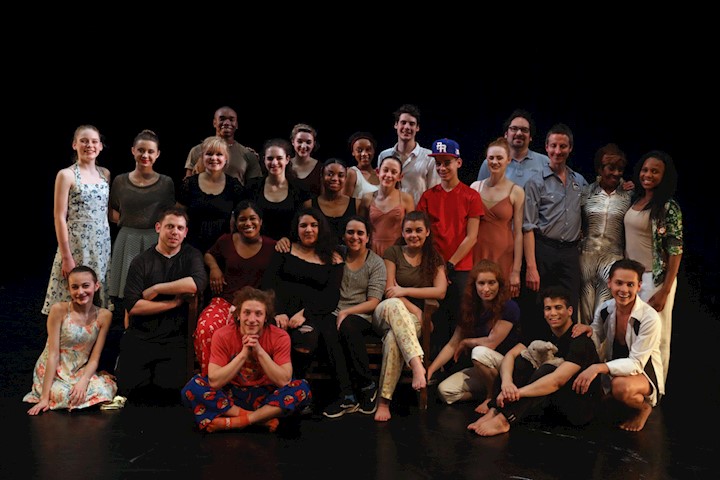
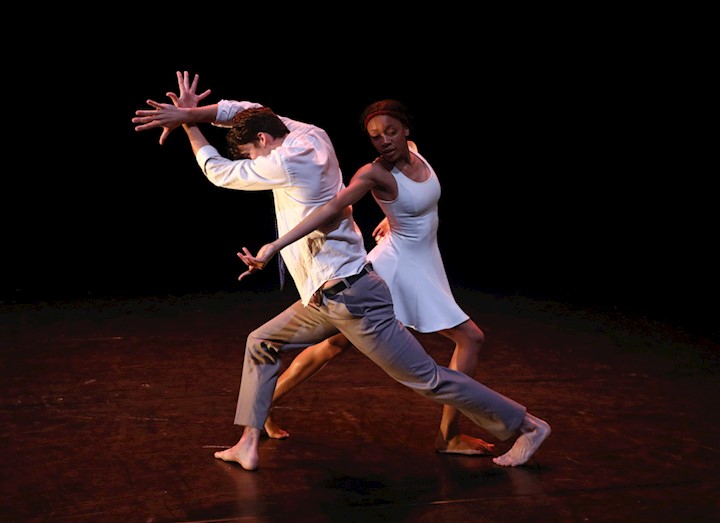
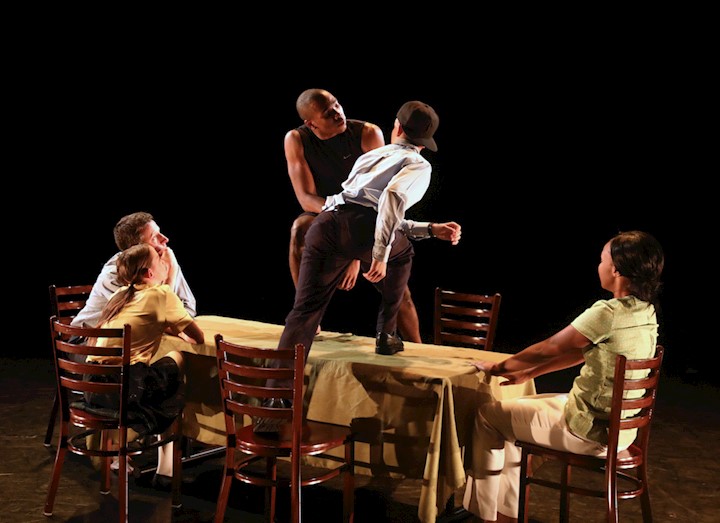
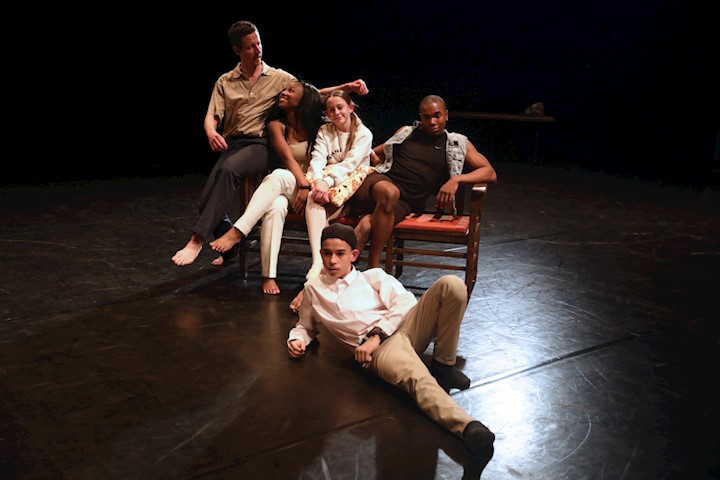
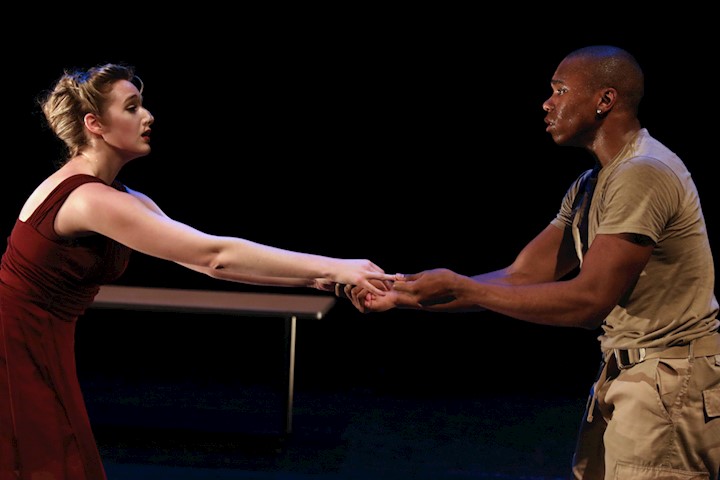
1. Anne Bogart, And Then, You Act: Making Art in an Unpredictable World (New York and London: Routledge, 2007), 107. back to text
2. Ibid, 75 back to text
3. Gustavo Perez Firmat, Life on a Hyphen: The Cuban - American Way (Texas: University of Texas Press,1994), 75. back to text
4. Ibid, 15. back to text
Works Cited
Bogart, Anne. 2007. And then, you act: Making art in an unpredictable world. New York and London: Routledge.
Perez Firmat, Gustavo. 1994. Life on a Hyphen: The Cuban - American Way. Texas: University of Texas Press.